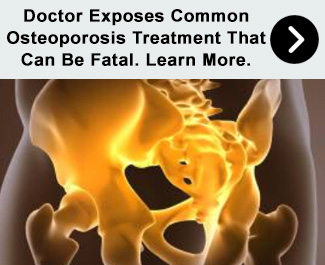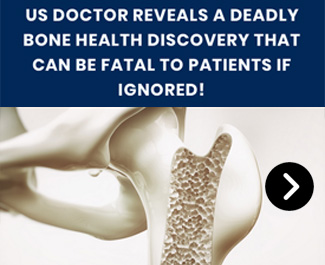Below, you’ll find must-know information about osteoporosis.
LEARN MORE NOW
Osteoporosis? How To Reverse Bone Loss & Increase Bone Density. SEE IT
Bone Health Discovery Can Be Fatal If Ignored. SEE IT
Doctor Cracks The "Bone Code" For Preventing And Treating Osteoporosis. SEE IT
If You Have Osteoporosis, Do This Immediately. SEE IT
Doctor Exposes Deadly Common Osteoporosis Treatments. SEE IT
Osteoporosis is a medical condition where the bones have become weak and brittle. (1) Women in the menopausal stage are more prone to develop this condition. Now, this does not mean that men are spared from this particular because they’re not.
Aside from gender, family history can also contribute to the onset of this condition. Other factors include low calcium intake, a sedentary lifestyle, smoking, excessive alcohol, and consumption.
If left untreated, this condition can increase the risk of bone fractures. The hip, spine, and wrist are most likely to be affected.
Fractures caused by osteoporosis can bring about significant pain, disability, and loss of independence. The individual’s quality of life can greatly be affected.
Osteoporosis can be categorized into four types. The most common one is primary osteoporosis. This occurs as a result of the natural aging process.
Another type is secondary osteoporosis. This occurs as a result of an underlying medical condition or medication that affects bone health.
Examples of conditions that can cause secondary osteoporosis include hyperthyroidism, chronic kidney disease, and rheumatoid arthritis.
Idiopathic juvenile osteoporosis is a rare form of osteoporosis that occurs in children and adolescents without an underlying medical condition. The cause of this particular type of osteoporosis is unknown.
Osteogenesis imperfecta is a genetic disorder that affects the production of collagen, a key component of bone tissue. (2)
It is important to treat osteoporosis because it is a condition that can significantly increase the risk of fractures and other complications, leading to reduced quality of life and disability.
Treatment of osteoporosis can help to slow or stop bone loss, increase bone density, and reduce the risk of fractures.
Early detection and treatment of osteoporosis are essential to prevent complications and improve outcomes.
Screening for osteoporosis is recommended for women over the age of 65 and men over the age of 70, as well as for individuals with certain risk factors, such as a family history of osteoporosis, low body weight, or a history of fractures. (3)
9. Lifestyle Changes
Certain lifestyle changes can help to improve bone health and reduce the risk of fractures. Regular weight-bearing exercises, such as walking, jogging, or strength training, can help to strengthen bones and reduce the risk of fractures. Exercise also improves balance and coordination, which can reduce the risk of falls.
A balanced diet rich in calcium and vitamin D can keep the bones strong. Calcium is found in leafy green vegetables, dairy products, and fortified foods. Vitamin D is found in fatty fish, egg yolks, and fortified foods.
Smoking has been shown to accelerate bone loss and increase the risk of fractures. Quitting smoking can help to slow down bone loss and improve overall health.
Limiting alcohol consumption to no more than one drink per day for women and two drinks per day for men may also help to improve bone health.
(continued next page)
Osteoporosis? How To Reverse Bone Loss & Increase Bone Density. SEE IT
Bone Health Discovery Can Be Fatal If Ignored. SEE IT
Doctor Cracks The "Bone Code" For Preventing And Treating Osteoporosis. SEE IT
If You Have Osteoporosis, Do This Immediately. SEE IT
Doctor Exposes Deadly Common Osteoporosis Treatments. SEE IT


